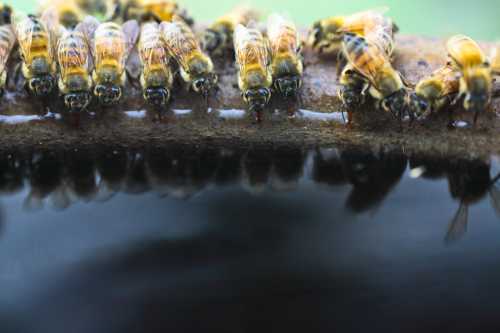Do Bees Have An Exoskeleton?
Yes, like other insects, bees have an exoskeleton in the form of a hard but brittle cuticle covering the outer surface of the body.
The exoskeleton of bees
 The exoskeleton of bees is covered in hair, though some bees have a denser covering of hair than others.
The exoskeleton of bees is covered in hair, though some bees have a denser covering of hair than others.
Bees don't have bones. Instead, their bodily organs, nervous system, the brain, muscles and so on, are all housed inside an exoskeleton.
During the life cycle of the bee, there are 4 key stages: egg, larva, pupa, and finally adult bee.
Before bees grow into adults, they spend time as a larva then pupa. Larva and pupa also have an exoskeleton, also referred to as (larval or pupal cuticle).
The larva molts (sheds the cuticle) 4 times, and the pupa once more before becoming an adult bee, with a new cuticle (exoskeleton).
The exoskeleton is hairy enabling the bee to trap pollen on its coat, detect vibrations in the air, and regulate the temperature of their bodies.
The exoskeletons of bees also features small holes or punctures that sometimes aid identification between different species.
Why bees need an exoskeleton
The exoskeleton provides the bee with shape, waterproofing, and (in conjunction with somatic muscles) flexibility and mobility - the exoskeleton is flexible around the joints of the abdominal segments.
It also provides some protection against disease (as explained further below).
What is the exoskeleton made of?
The exoskeleton of bees and other insects, is made up of a substance called 'chitin', which is secreted by a single layer of epidermal cells.
Chitin is a substance that is brittle, but tough and elastic.
Chitin also has antimicrobial and anti-fungal properties and therefore helps protect the bee against disease and a certain amount of pollution, though insecticides may damage the chitin, leaving the bee more vulnerable.
Resources
- Soares, M.P.M., Barchuk, A.R., Simões, A.C.Q. et al. Genes involved in thoracic exoskeleton formation during the pupal-to-adult molt in a social insect model, Apis mellifera. BMC Genomics 14, 576 (2013). https://doi.org/10.1186/1471-2164-14-576
- Merzendorfer H, Zimoch L. Chitin metabolism in insects: structure, function and regulation of chitin synthases and chitinases. J Exp Biol. 2003 Dec;206(Pt 24):4393-412. doi: 10.1242/jeb.00709. PMID: 14610026.
- Bumblebees by Ted Benton - Collins New Naturalist Library (98)
- Butzloff PR (2011) Micro-CT Imaging of Denatured Chitin by Silver to Explore Honey Bee and Insect Pathologies. PLoS ONE 6(11): e27448. https://doi.org/10.1371/journal.pone.0027448



